Messenger's Mercury trip ends with a bang, and silence
- Published
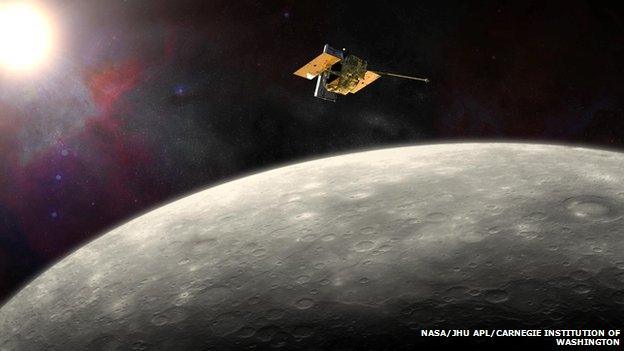
The probe, illustrated soaring above Mercury, went into orbit around the planet in March 2011
Nasa's Messenger mission to Mercury has reached its explosive conclusion, after 10 years in space and four in orbit.
Now fully out of fuel, the spacecraft smashed into a region near Mercury's north pole, out of sight from Earth, at about 20:00 GMT on Thursday.
Mission scientists confirmed the impact minutes later, when the craft's next possible communication pass was silent.
Messenger reached Mercury in 2011 and far exceeded its primary mission plan of one year in orbit.
That mission ended with an inevitable collision: Messenger slammed into our Solar System's smallest planet at 8,750mph (14,000km/h) - covering 2.4 miles (3.9km) every second.
The impact will have completely obliterated this history-making craft. And it only happened because Mercury has no thick atmosphere to burn up incoming objects - the same reason its surface is so pock-marked by impact craters.
According to calculations, the 513kg, three-metre craft blasted a brand new crater the size of a tennis court. But that lasting monument is far too small to be visible from Earth.

Mission scientists released this illustration showing Messenger's calculated impact location
"Today we bid a fond farewell to one of the most resilient and accomplished spacecraft ever to have explored our neighbouring planets," said Sean Solomon, Messenger's principal investigator.
"Our craft set a record for planetary flybys, spent more than four years in orbit about the planet closest to the Sun, and survived both punishing heat and extreme doses of radiation."
Messenger's fuel supply, half its weight at launch, was completely spent weeks ago but four final manoeuvres were conducted, to extend the flight as long as possible. These were accomplished by venting the helium gas normally used to pressurise actual rocket fuel into the thrusters.
The last of those manoeuvres took place on 28 April, external.

These are two of Messenger's final images, snapped on 26 and 29 April
During its twice-extended mission, Messenger (MErcury Surface, Space ENvironment, GEochemistry, and Ranging) transformed our understanding of Mercury. It sent back more than 270,000 images and 10 terabytes of scientific measurements.
It found evidence for water ice hiding in the planet's shadowy polar craters, and discovered that Mercury's magnetic field is bizarrely off-centre, shifted along the planet's axis by 10% of its diameter.
Skimming the surface
For four years - and 4,105 circuits in total - Messenger traced a highly elliptical orbit around Mercury. It regularly drifted out to a distance of nearly twice the planet's diameter, before swinging to within 60 miles (96km) at closest approach.
To maintain this pattern in the face of interference from the Sun, it needed a blast of engine power every few months, which meant the mission faced an inevitable, violent end when the fuel ran out.
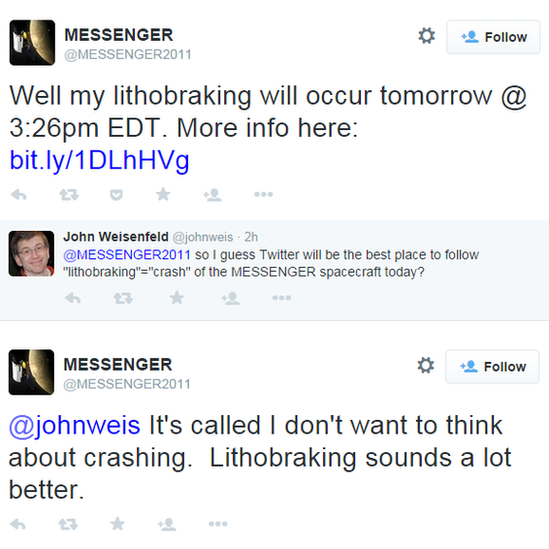
The Messenger Twitter account was active in the run-up to the crash
Messenger made its penultimate pass at a distance of between 300 and 600 metres - one or two times the height of the Eiffel Tower - at about 13:00 BST on Thursday.
"If you could see that, it would be a real spectacle," said Jim Raines, the instrument scientist on the craft's FIPS instrument (Fast Imaging Plasma Spectrometer) and a physicist at the University of Michigan. "It would cross the horizon in just a second or two, flying low overhead at ten times the speed of a supersonic fighter."
The next time it swung back close to Mercury's surface, eight hours later, it was curtains for Messenger; the impact was precisely modelled using maps produced by the craft's own data.
Mercury has towering cliffs left by its shrinking, wrinkling history, but the calculated path showed Messenger missing these particular obstacles.
Messenger compiled this coloured map of Mercury during its first year in orbit
"It's a pretty flat area of the planet," said Nancy Chabot, the instrument scientist on the Mercury Dual Imaging System (MDIS), Messenger's twin cameras. "It's going to be a skimming impact."
But it will have left a mark.
"It will probably be an oblique crater... because the impact angle will be so shallow, so grazing to the surface. But at over 8,000 miles per hour, it's going to make a crater."
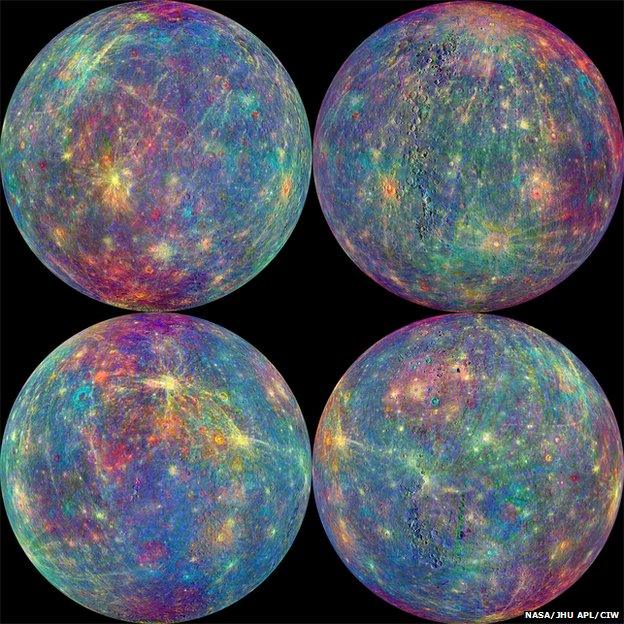
These new images overlay chemistry measurements (in colour) and grayscale photos
Because the impact happened on the side of the planet facing away from Earth, the craft was out of contact in its final moments. So it probably carried more than 1,000 unseen images to its final, explosive resting place.
MDIS used to take hundreds of photos every day. Earlier this month, mission scientists released fresh images, external which superimposed years of spectrometry data about the chemistry of the planet's surface, illustrated by different colours, onto black-and-white images built up from thousands of smaller MDIS photos.
Proud achievements
The planet has been mapped and studied to a level of detail far beyond the original mission plan. Many of the results themselves were also surprising.
"A lot of people didn't give this spacecraft much of a chance of even getting to Mercury, let alone going into orbit and then gathering data for four years instead of the original scheduled one-year mission," said William McClintock from the University of Colorado Boulder, principal investigator on MASCS (the Mercury Atmospheric and Surface Composition Spectrometer, another of the seven scientific instruments on board).
"In the end, most of what we considered to be gospel about Mercury turned out to be a little different than we thought."
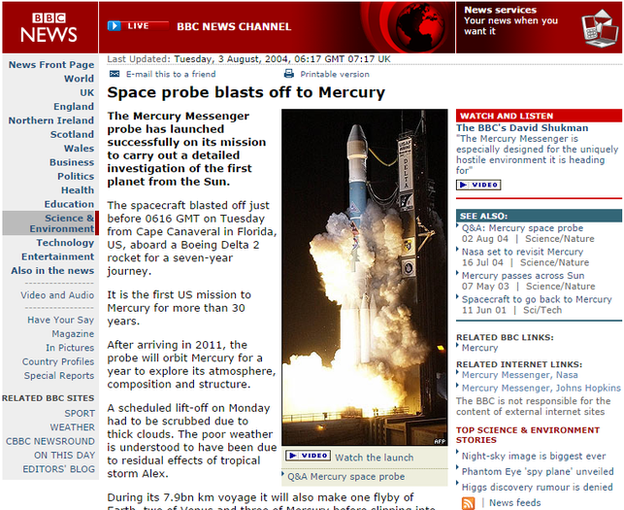
This is how the BBC News website covered Messenger's launch in 2004
Dr Chabot remembers the tension of processing the first image ever recorded by a spacecraft orbiting Mercury, back in 2011. She had only recently taken over as the instrument scientist on MDIS.
"It was exciting but for me personally it was also a bit stressful," Dr Chabot, who works at the Johns Hopkins Applied Physics Laboratory, told the BBC. "But then the first image came back and it looked amazing and beautiful, and we realised we were here at Mercury to stay. I take a lot of pride in that image."
Despite being able to look back with pride, Dr Raines said this was still a sad day for Messenger scientists.
"Pretty much all the instruments are still doing great, so that makes it a little harder," he told BBC News. But the mission was always going to be limited by the fuel needed to maintain its difficult orbit.
"To be honest, I've seen this day coming for a long time and it's just one of these things that I've not been looking forward to. I'm really going to be sad to see it go."
Follow Jonathan on Twitter, external
- Published30 April 2015
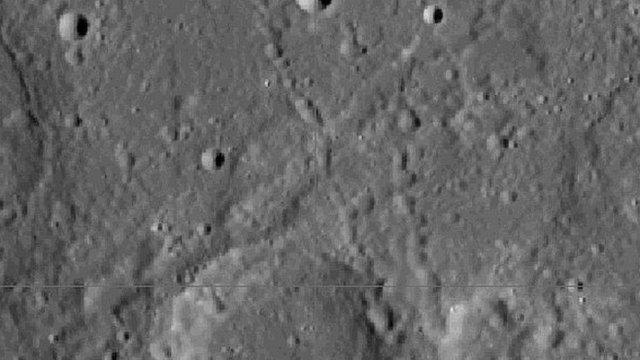
- Published17 March 2015

- Published30 March 2015
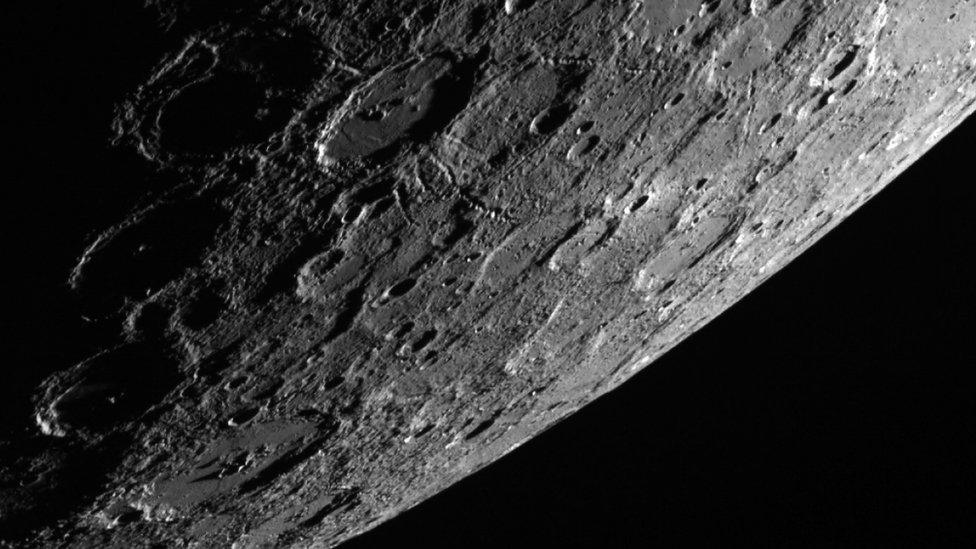
- Published16 March 2014

- Published16 February 2013
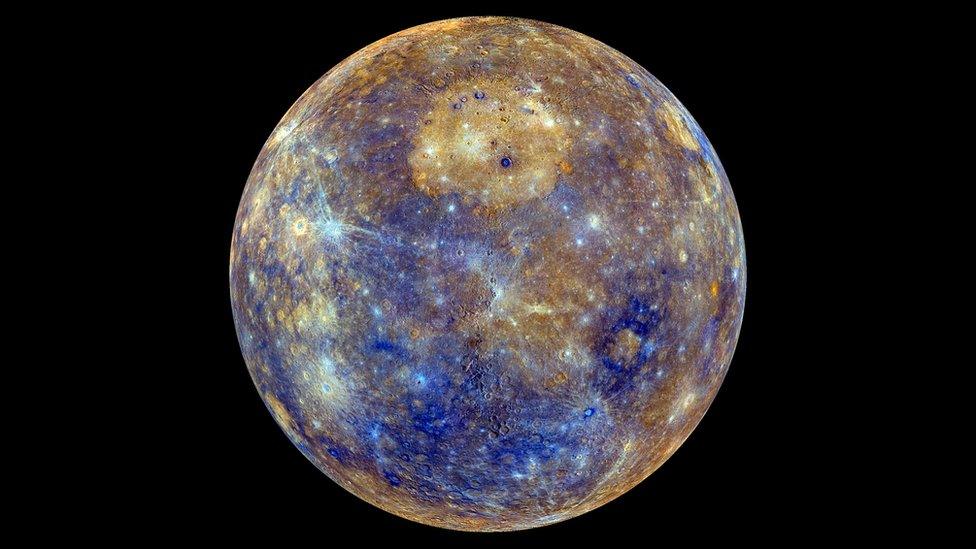
- Published30 November 2012
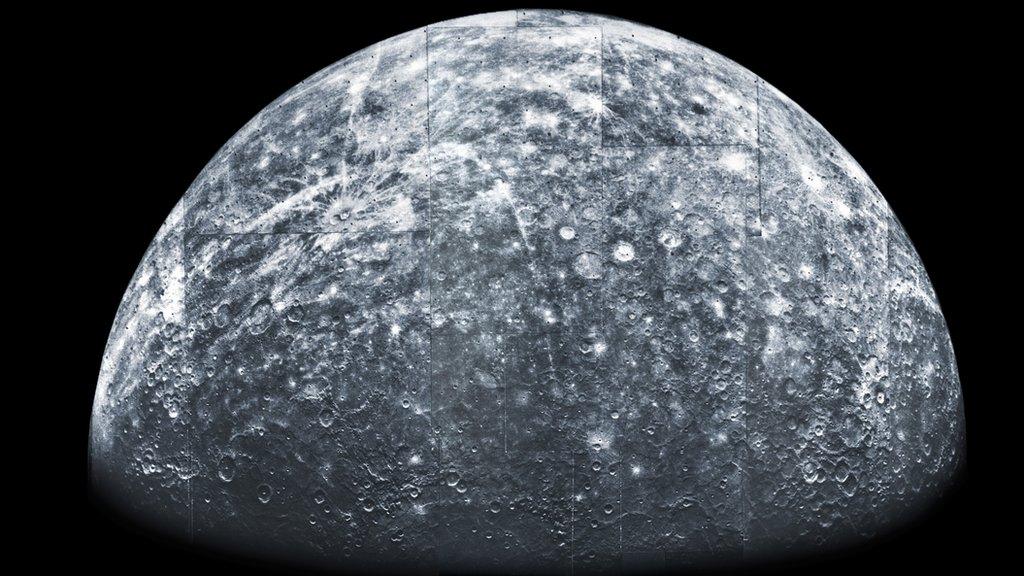
- Published18 March 2011